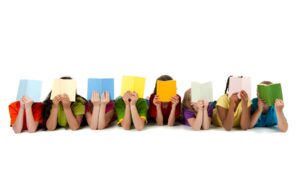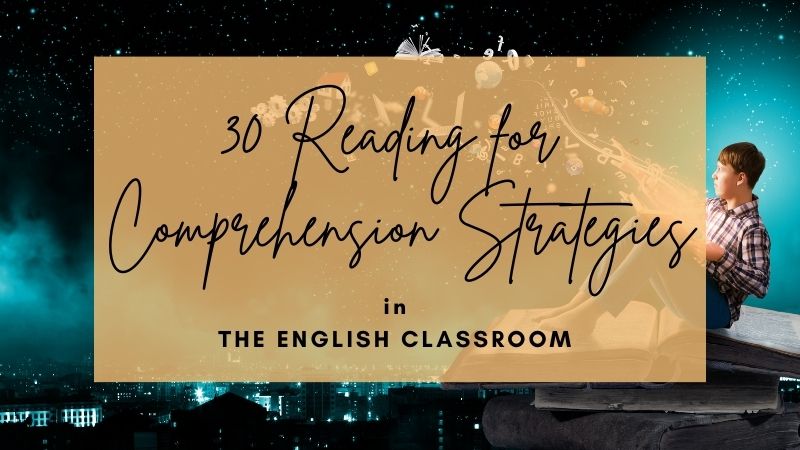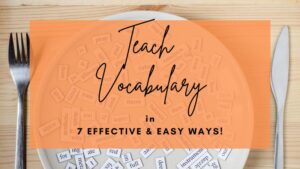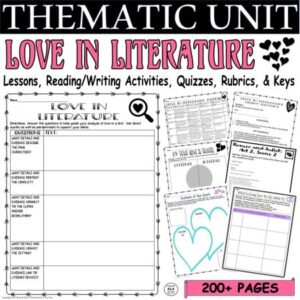We daily read thousands of words without ever opening a book. Therefore, reading for comprehension strategies are necessary every single day!
Teaching students strategies for reading comprehension is one of the most basic but imperative things we can do in middle and high school English. Often students struggle with reading comprehension because they have limited exposure to a variety of texts or misunderstand vocabulary as texts become more challenging, or simply because they don’t have enough practice with different reading for comprehension strategies.
But, with encouragement, we can build our repertoire of teaching techniques to help with reading for comprehension. Read on for 30 strategies that can help you and your students make reading a more fun and productive experience!
Need help with Reading for Comprehension Test Prep? Check out this FREE Pack of 3 Test Prep Activities to help students achieve success on standardized tests!
What is Reading for Comprehension?
Reading for comprehension is simply how someone interprets and understands a text. To ensure understanding, people use strategies to read a text and integrate it with their background knowledge to make meaning and gain understanding.
As a result, the goal is to equip students with reading for comprehension strategies so that in encountering those thousands of words each day, they can accurately interpret them and make meaning.

Do your students need help with learning vocabulary, an essential part of reading for comprehension? Check out “Teach Vocabulary in 7 Easy Ways!”
30 Reading For Comprehension Strategies
This list of options can encourage a mix-and-mingle approach. All of these strategies should be explicitly taught or modeled for students and can be done at different grade levels. For example, senior students likely review a title before reading. However, taking a moment to model this reading for comprehension skill is a great reminder of what’s necessary to build meaning from a text.
- Read the title as the first step to predicting what will happen in a text.
- Using an activity such as these activities for Shirley Jackson’s “The Lottery” that are aligned to Common Core standards can help teach students this first step in previewing a text.
- Look at textual features such as headlines, sub-headings, images, photographs, and captions that accompany them.
- Check length to help with pacing and chunking of material (breaking a longer text into smaller parts, which is ideal for differentiation). Check out this post to read more about strategies for chunking and summarizing in your English class.
- Set a goal for reading so students have a purpose for tackling a text. This is where a goal can be established by the teacher or students can create self-directed goals. Check out these ready-made activities for goal setting.
- Read the first and last sentences of every paragraph to check for understanding. The thesis or topic sentence and concluding sentence are the best spots to clarify the main idea and overall point of any passage.
- Circle Vocabulary and identify words that students know, sort of know, and don’t know. Transfer this vocabulary to graphic organizers like these ones in order to go through and define the words in order for students to improve their understanding of passages.
- Underline repeated ideas or even phrases in the text. This makes it easier to see patterns within a text. If a writer includes XYZ several times, then it’s likely that XYZ has a more significant meaning!
- Highlight to go back. As a next step to underlining, using highlighters can draw attention to big ideas so they are readily visible in reviewing the text.
- Annotate to explain by making notes from paragraph to paragraph. These can be short and sweet but should be clear about the content of the section that was just read.
- Focus on meaning so that students can ask basic but necessary questions. First, ask what does this mean? Followed by the question, how do I know? This will encourage students to infer meaning from the passage.
- Constantly question as you read. Here is the opportunity to have students question the text using their prior knowledge. The goal of this approach is to better integrate the new text and its ideas with already-established ideas and understanding.
- Reread the text including all sentences, paragraphs, or pages. This is a great opportunity to return to the underlined and highlighted parts as well as the notes in the margins.
- Visualize the scene or characters by creating images in notes or even doodles in the margins of a text. This will encourage students to process the information so they understand key elements.
- Summarize After Reading: chunks, pages, or whole texts. If students are reading fiction consider the tried-and-true “Somebody… Wanted… But… So… Then…” way to summarize. A further step is to get students to summarize any text using one sentence! These differentiated graphic organizers work with any text to make this task an easy win!
- Retell what you read. This is an opportunity for students to share knowledge. Create a speed dating activity where students retell to others as they move around the room.
- Flag any confusing ideas with a little question mark. Then when continuing to question the text or when reviewing, students can focus there to clear their confusion.
- Stop and take a mini-break. Taking a step away from a text can provide figurative and literal distance to avoid frustration and to provide some breathing room to process the ideas in the text.
- Reread the entire text ANOTHER day. If a mini-break doesn’t work, then return another day. Perhaps it’s a matter of needing more background knowledge. An exit ticket can gauge what issues might exist so you can adjust before returning to the text.
- Read aloud. For some texts, this is the ideal approach. If you’re reading Shakespeare or any drama in class, then it’s meant to be performed and read aloud.
- Connect to another passage/idea. Making connections between texts will have students integrating a new text with their background knowledge. Try these 5 days of easy-to-teach paired passages with questions to help students with reading for comprehension.
- Reflect on what you read. During and particularly after reading have students use prompts such as “I think…” or “I feel” in order to encourage making connections. This step will help students make more meaning for themselves.
- Determine the message, central idea, or purpose. Get students to identify the goal of the text they’re reading. Just print and teach with these 5 lessons to focus on central idea using informational and literary texts plus paired passages.
- Draw what you read. This is particularly helpful for plot analysis and summarizing texts. Use a story like O. Henry’s “The Gift of the Magi” for visualization activities with differentiated options to meet the needs of all students.
- Talk about the reading. Have students discuss the text together in small groups. Different backgrounds and experiences applied to an interpretation of a text can add more dimension to everyone’s understanding.
- Ask questions. The 5 Ws are a great start! Then shift to higher-order thinking questions such as “what might…” or “how will…” so students can dig deeper. The act of speculating tied to the text will push students beyond the surface.
- Read other similar texts. In order to make meaning students need prior knowledge so reading around a topic or reading similar texts is an easy way to make this happen. This love in literature unit including poetry, a short story, and drama excerpts would be an ideal option. And if you want even more ideas check out this post about teaching literature thematically.
- Respond to the text (what do you think?). This can be straightforward by simply asking “What do you think?” Or you can increase engagement by including more creative options. This “Song of Myself” poetry activity and writing task helps students to connect with poetry, which is often difficult for reading comprehension.
- Assess the Text by asking if it’s effective, well-written, or even whether it was enjoyable to read. This could be done in isolation after reading or better yet combined with a personal post-reading reflection or one that’s tied to the author’s purpose.
- Listen to an audio version. Studies show that a multi-modal approach–reading and listening–to a text can increase students’ comprehension and retention. This is also another way to differentiate for students.
BONUS: Ask students what works for them! These 30 strategies can be used at different points so students gain familiarity with each one. Then students can reflect and identify what works for them. This is another opportunity to differentiate reading comprehension strategies to meet the needs of the diverse learners in your classes!
Why do students need direct instruction in these reading for comprehension techniques?
There is so much value in reading for comprehension since it’s a skill we use every day whether we open a book or not. And good readers are made not born; reading for comprehension is a skill that can be learned. But in order to be learned and honed it needs to be explicitly and repeatedly taught and incorporated into lessons. These 30 reading for comprehension strategies can set you and your students up for success today and every day!
Need more fun lessons and activities to help with reading for comprehension? Check out my store Kristin Menke-Integrated ELA Test Prep!




